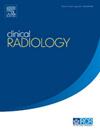Decoding Erdheim–Chester Disease: a Pictorial Essay of the Radiologic and Pathologic Findings, and its Main Differential Diagnoses
IF 2.1
3区 医学
Q2 RADIOLOGY, NUCLEAR MEDICINE & MEDICAL IMAGING
引用次数: 0
Abstract
Erdheim–Chester disease (ECD) is a rare non–Langerhans cell histiocytic neoplasm that primarily affects adults in their fifth to seventh decades of life. It is characterized by multisystem infiltration of CD68-positive, CD1a-negative foamy histiocytes and is driven by mutations in the MAPK and PI3K-AKT pathways, classifying it as a clonal myeloid neoplasm. ECD manifests with a wide spectrum of clinical features, including skeletal, cardiovascular, central nervous system, retroperitoneal, pulmonary, and endocrine involvement, frequently causing delays in diagnosis due to its nonspecific presentation. Targeted therapies, particularly BRAF and MEK inhibitors, have transformed the management of ECD, leading to significant improvements in patient outcomes.
Imaging plays a pivotal role in raising diagnostic suspicion, evaluating disease extent, and monitoring treatment response. Early recognition and accurate diagnosis rely on a multidisciplinary approach, integrating clinical evaluation, histopathology, molecular mutation analysis, and radiological findings. This pictorial essay aims to enhance radiologists’ familiarity with the key imaging findings of ECD across affected organ systems, highlighting characteristic patterns, potential diagnostic pitfalls, and important differentiating features from other mimicking conditions. We also provide an overview of the disease’s pathogenesis and modern treatment strategies. By increasing awareness of this challenging and often under-recognised condition, we aim to facilitate earlier diagnosis, more accurate imaging interpretation, and improved patient care.
解码厄德海姆-切斯特病:影像学和病理表现的图片文章,以及它的主要鉴别诊断
埃尔德海姆-切斯特病(ECD)是一种罕见的非朗格汉斯细胞组织细胞肿瘤,主要影响成年人在他们的第五至第七十年的生活。其特征是cd68阳性和cd1a阴性泡沫组织细胞多系统浸润,由MAPK和PI3K-AKT通路突变驱动,归类为克隆性髓系肿瘤。ECD表现为广泛的临床特征,包括骨骼、心血管、中枢神经系统、腹膜后、肺和内分泌受累,由于其非特异性表现,经常导致诊断延误。靶向治疗,特别是BRAF和MEK抑制剂,已经改变了ECD的管理,导致患者预后的显着改善。影像学在提高诊断怀疑、评估疾病程度和监测治疗反应方面起着关键作用。早期识别和准确诊断依赖于多学科方法,包括临床评估、组织病理学、分子突变分析和放射学结果。这篇图片文章旨在提高放射科医生对跨受影响器官系统ECD的主要影像学发现的熟悉程度,强调特征模式,潜在的诊断缺陷,以及与其他模拟条件的重要区别特征。我们也提供了疾病的发病机制和现代治疗策略的概述。通过提高对这种具有挑战性且经常被忽视的疾病的认识,我们的目标是促进早期诊断,更准确的成像解释,并改善患者护理。
本文章由计算机程序翻译,如有差异,请以英文原文为准。
求助全文
约1分钟内获得全文
求助全文
来源期刊

Clinical radiology
医学-核医学
CiteScore
4.70
自引率
3.80%
发文量
528
审稿时长
76 days
期刊介绍:
Clinical Radiology is published by Elsevier on behalf of The Royal College of Radiologists. Clinical Radiology is an International Journal bringing you original research, editorials and review articles on all aspects of diagnostic imaging, including:
• Computed tomography
• Magnetic resonance imaging
• Ultrasonography
• Digital radiology
• Interventional radiology
• Radiography
• Nuclear medicine
Papers on radiological protection, quality assurance, audit in radiology and matters relating to radiological training and education are also included. In addition, each issue contains correspondence, book reviews and notices of forthcoming events.
 求助内容:
求助内容: 应助结果提醒方式:
应助结果提醒方式:


